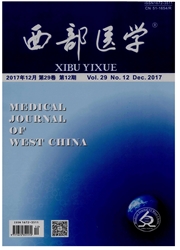

 中文摘要:
中文摘要:
目的 探索兔纤维环细胞分离培养的最佳消化时间及不同消化时间对细胞生物特性的影响。方法 将20只新西兰大白兔随机均分为A、B、C、D、E组,空气栓死并取其纤维环组织,采用胰蛋白酶和Ⅱ型胶原酶序贯消化法分离纤维环细胞,A、B、C、D、E组Ⅱ型胶原酶消化的时间分别为1、2、3、4、5h,获取的细胞用DMEM培养基进行培养。通过比较各组获取的原代细胞数量、细胞存活率,以及第3代细胞在形态、细胞外基质表达情况等方面的差异。结果随着消化时间的增加,获取的原代细胞数目越多,C、D、E组均可获得较理想的细胞数量,但E组细胞出现贴壁不良。5组第3代细胞甲苯胺蓝异染性、Ⅰ型胶原和Ⅱ型胶原免疫染色均呈阳性,但C、D组较其他三组着色更深。结论 用序贯消化法分离培养兔纤维环细胞,Ⅱ型胶原酶的最佳消化时间为3-4h。
 英文摘要:
英文摘要:
Objective To investigate the best digestion time for isolation of annulus fibrosus cell and the effects o~ digestion time on the cell biological characteristics. Methods 20 New Zealand white rabbit were randomly divided into A, B, C, D and E group. After the rabbit was executed with air, The annulus fibrosus was taken from New Zealand white rabbits and digested with trypsase and collagenase Ⅱ for isolating annulus fibrosus cell. Type Ⅱ collagenase digestion time of A, B, C, D and E group were 1, 2, 3, 4 and 5 h, respectively. Then, the cells were cultivated in DMEM culture medium. By comparing the number of primary cell, cell survival rate, cell morphology and extracellular matrix expression, the suitable digestion time for isolating annulus fibrosus cell was determined. Results With the digestion time prolonging, the number of primary cell was increasing. The number of obtained cells was enough for C, D and E groups, but the cell adhesion for E group was undesirable. All groups were positive in toluidine blue staining and immu- nohistochemical staining of collagen I and Ⅱ , and the staining for C and D group was deeper than other three groups. Conclusion During the process of annulus fibrosus cell isolation and cultivation by sequential digestion method, the best collagenase Ⅱ digestion time is 3-4h.
 同期刊论文项目
同期刊论文项目
 同项目期刊论文
同项目期刊论文
 Human adipose stem cells maintain proliferative, synthetic and multipotential properties when suspen
Human adipose stem cells maintain proliferative, synthetic and multipotential properties when suspen Determination of the potential of induced pluripotent stem cells to differentiate into mouse nucleus
Determination of the potential of induced pluripotent stem cells to differentiate into mouse nucleus Novel chitosan hydrogel formed by ethylene glycol chitosan,1,6-diisocyanatohexan and polyethylene gl
Novel chitosan hydrogel formed by ethylene glycol chitosan,1,6-diisocyanatohexan and polyethylene gl Repair of articular cartilage defects in rabbits through tissue-engineered cartilage constructed wit
Repair of articular cartilage defects in rabbits through tissue-engineered cartilage constructed wit 期刊信息
期刊信息
